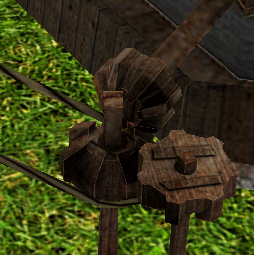In Illyriad we will be using audio in three ways:
1. Motif background music
 We will be mixing these in and out of the game environment dependent upon the map focus on biome. Some examples could be Mediterranean music, jungle music, desert music or polar music. We also plan to have some generic musical motifs and themes that enhance the game experience, such as triumphal themes that linger after you win a battle or trepidation themes that build anticipation before a diplomatic event such as sabotage or assassination. We are generally writing specific music for all of these themes as opposed to licencing them. We are also exploring the Web Audio API for this purpose – almost treating it as a sequencer – so that we can slave a standardized or fractional BPM to the game server clock and use all the clever tricks. For example, we may increase tempo of the music with the player’s proximity to the event outcome.
We will be mixing these in and out of the game environment dependent upon the map focus on biome. Some examples could be Mediterranean music, jungle music, desert music or polar music. We also plan to have some generic musical motifs and themes that enhance the game experience, such as triumphal themes that linger after you win a battle or trepidation themes that build anticipation before a diplomatic event such as sabotage or assassination. We are generally writing specific music for all of these themes as opposed to licencing them. We are also exploring the Web Audio API for this purpose – almost treating it as a sequencer – so that we can slave a standardized or fractional BPM to the game server clock and use all the clever tricks. For example, we may increase tempo of the music with the player’s proximity to the event outcome.
Weird, I know, but during the midlife crisis that impelled me to start Illyriad, I also released a reasonably successful album of ambient and dance music. So I’m pretty familiar with creating soundscapes and – whilst I haven’t yet used it in anger – the toolset I see in the Web Audio API looks pretty comprehensive. I would bet my bottom dollar that someone will build (if they haven’t already) a full Web Audio API sequencer, and I can also see (the equivalent of) VST plugins and softsynths being sold on the Chrome webstore.
2. Notification/event audio
 These are the standardized sounds that occur during gameplay based on triggers such as event queuing or occurrences. For example, starting building construction in game with sound of carpenters sawing or the messenger noise you get when you receive an email. We’re looking at making some of these specific to the game races, so the new mail sound for receiving an in game message is different for Elves and Orcs. Some of these are being worked on currently by James Bell, our audio engineer. He is out in the field recording the sounds at historic battle re-enactment events around the UK so that we can really get it right!
These are the standardized sounds that occur during gameplay based on triggers such as event queuing or occurrences. For example, starting building construction in game with sound of carpenters sawing or the messenger noise you get when you receive an email. We’re looking at making some of these specific to the game races, so the new mail sound for receiving an in game message is different for Elves and Orcs. Some of these are being worked on currently by James Bell, our audio engineer. He is out in the field recording the sounds at historic battle re-enactment events around the UK so that we can really get it right!
We’re also looking to mix these on the fly in the browser. A battle notification audio event would be made up of many different audio snippets in the mix. For example, a player who attacks a pack of lions, using his cavalry, in a savannah environment that wins the battle will get a very different sound effect notification from a player who attacks a horde of skeleton warriors, using his bowmen, in the arctic north that loses the battle.
3. Environmental audio
 Different from the motif music, these are specifically audio snippets (some looped, some one-off or randomly triggered) that are geo-specific, especially within the WebGL 3D environment. If you go up close to the grinding cog-wheels of a working flourmill or approach the river bank, the audio source is located (in the stereo and depth pan) in reference to your viewing position and that of the sound source with volume controlled by proximity.
Different from the motif music, these are specifically audio snippets (some looped, some one-off or randomly triggered) that are geo-specific, especially within the WebGL 3D environment. If you go up close to the grinding cog-wheels of a working flourmill or approach the river bank, the audio source is located (in the stereo and depth pan) in reference to your viewing position and that of the sound source with volume controlled by proximity.
Some of these effects are environment proximity-related and others are time-slaved (such as the dawn chorus of birds or the frogs and crickets of dusk) or environment-slaved (for example, wind, rain or thunder) as the game world progresses and changes.








